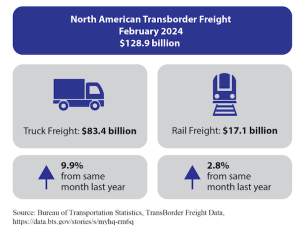CN moved more than 125,000 grain cars to export terminals at the ports of Vancouver and Prince Rupert during the crop year -- the most in 20 years. The Vancouver movement of 6.7 million tons was driven by record canola shipments of 3.9 million tons, while the Prince Rupert total shipments topped 4 million tons for the sixth consecutive crop year, matching another record.
"This is the most canola CN has ever moved in one crop year," said Andy Gonta, CN vice-president, Bulk Products. "Alberta farmers planted record acres of canola last year, enjoyed strong yields, and harvested a record crop. Our customers then did an excellent job of promoting and selling the product in overseas markets."
During the past crop year, CN fully implemented its new Scheduled Grain Service Plan, which was launched in January 2010. The Plan achieved an 81 per cent success rate in delivering cars ordered to specific elevators on the scheduled day.
"We are pleased with the improvement in service reliability we received last crop year from CN," said Bob Miller, Senior Vice President, North American Grain for Viterra, Canada's largest agribusiness. "CN's Scheduled Grain Service Plan has significantly improved the reliability for spotting railcars in our country grain handling network, allowing us to more effectively utilize our resources and provide additional value to farmers by better scheduling deliveries of grain to our elevators."
Both parties are optimistic that further efficiency improvements are to be gained in the supply chain through collaboration, communication and the application of proper metrics.
Mike Cory, CN senior vice-president, Operations, Western Region, underscored the grain plan's success and the cooperation from customers.
"We listened to what our customers were telling us, and learned some lessons about how to better collaborate across the entire grain supply chain," said Cory. "CN, the marketers, the country grain elevators, the port terminals and the shipping lines ensured that grain was handled efficiently at each point in the chain, from prairie to port and beyond.' The fact that we were able to achieve a high rate of success is a testament to our collective efforts."
In the coming months, CN intends to build on the success of the Scheduled Grain Service Plan, using superior service to help customers grow their share of world markets. A priority for CN will be to make the most efficient use of assets across the entire supply chain.
"We expect another big year for the West Coast, and we're working with our customers to ensure all available capacity is used effectively," said Cory.
In the 2010-2011 grain crop year, CN moved over 12.5 million tons of grain from the Prairie provinces to export terminals in Vancouver, Prince Rupert, and Thunder Bay.







